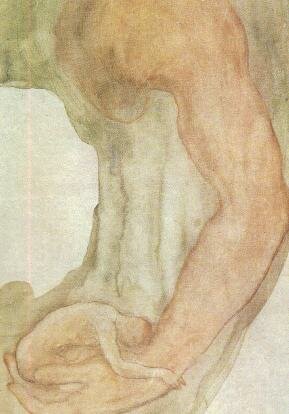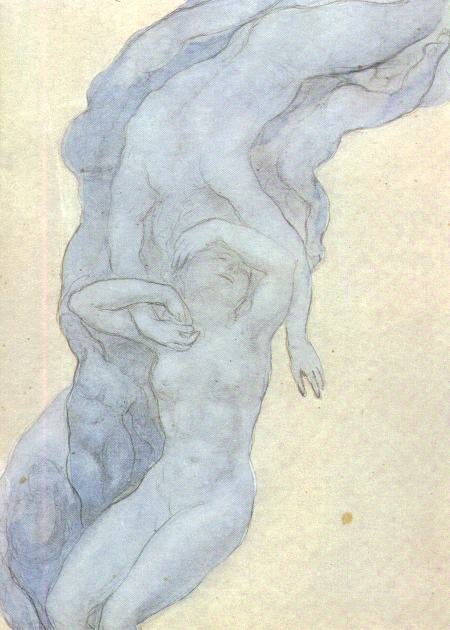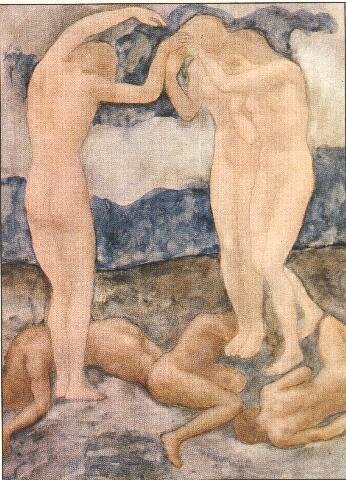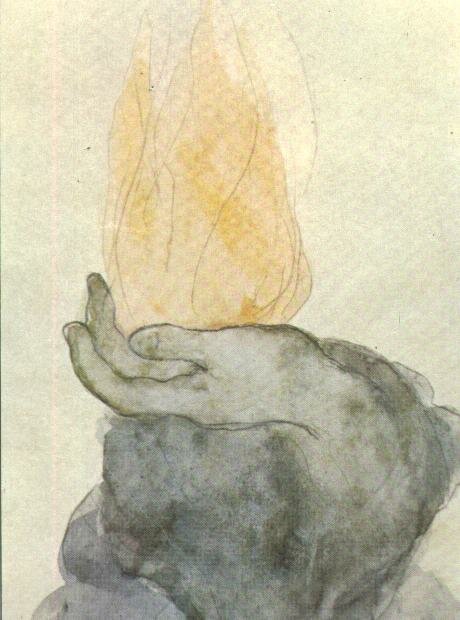Kahlil Gibran (1883-1931) - Gibran / Jibran - Khalil or Kahlil, Arabic name Jubrãn Khalil Jubrãn
Lebanese-American philosophical essayist, novelist, mystical poet, and artist. In the 1960s Gibran's works influenced especially American popular culture; his most famous book, THE PROPHET (1923), has been a bestseller from the 1920s. Gibran believed that if a sensible way of living and thinking could be found, people would have mastery over their lives.
"The human heart cries out for help; the human soul implores us for deliverance; but we do not heed their cries, for we neither hear nor understand. But the man who hears and understands we call mad, and flee from him."
Khalil Gibran was born in Bechari (Bsharri), Lebanon, a mountain village of Maronite Christians. A talented child, he was modelling, drawing, and writing at an early age. Gibran's mother, Kamila, took her children to the United States; their father, Khalil, who owned a walnut grove, remained in Lebanon. The family settled first in Boston, where she earned living by selling laces and linen. Within a year she managed to save enough money to help her son Peter to open a small dry goods store.
Gibran returned to Lebanon in 1897 for two years to study Arabic literature in Beirut at al-Hikma College. Gibran's artistic talents was recognized and he was introduced to F. Holland Day, a photographer, who tutored him in art and literature. Through Day Gibran was given entrée to Boston society, where he acquired valuable contacts. Gibran's mother died of cancer when he was 20. His sister Marianna supported him while he established himself as a writer and painter. Gibran's most ardent benefactress was Mary Haskell, the headmistress of a progressive girl's school in Cambridge. She supported her protégé financially for most of his career and edited his English-language books.
In 1904 Gibran had his first art exhibition in Boston. His first book, AL-MUSIQA (1905) was about music. It was followed by two collections of short stories and a novelette in 1912. From 1908 to 1910 he studied art in Paris with August Rodin. In 1912 he settled in New York, where he devoted himself to writing and painting. Though concerned with the transcendental in his books, the basic subject in Gibran's art was naked human bodies, tenderly intertwined .
Gibran's first works were written in Arabic and are considered central to the development of modern Arabic literature. Gibran also wrote for journals published by the Lebanese and Arab communities in the U.S. From 1918 he wrote mostly in English and managed to revolutionize the language of poetry in the 1920s and 1930s. His first book for the publishing company Alfred Knopf was THE MADMAN (1918), a slim volume of aphorisms and parables written in biblical cadence somewhere between poetry and prose.
Usually Gibran used prophetic tone to condemn the evils that torment his homeland or threaten the humankind. His style, a combination of beauty and spirituality, became known as 'Gibranism'. "I am a stranger to myself. I hear my tongue speak, but my ears find that voice strange. I may see my hidden self laughing, crying, defiant frightened, and thus does my being become enamored of my being and thus my soul begs my soul for explanation. But I remain unknown, hidden, shrouded in fog, veiled in silence." (from 'The Poet') In 1920 he founded a society for Arab writers called "Aribitah" (the pen bond), and supported the struggle to revolutionize the classically conservative Arabic literature. A very important channel for new ideas was Al Magar, the first New York Arabic newspaper, that Gibran wrote for. Other influential writers included Mikha'il Nu'aima (1889-1988), Iliya Abu Madi (1889-1957), Nasib Arida (1887-1946), Nadra Haddad (1881-1950), and Ilyas Abu Sabaka (1903-47). Especially Mikha'il Nu'aima's critical writings paved way to new freedom in poetic expression.
Although Gibran was not a great poet in verse, and most of his writings in prose should not be regarded as "poetry", he opened doors to a new kind of creativity. He also illustrated a number of his books with his own drawings. Salma Khadra Jayyusi wrote in 1987 that Gibran's rhythm "fell on ears like magic, intoxicating in its frequent use of interrogations, repetitions, and the vocative; by a language which was at once modern, elegant, and original; and by an imagery that was evocative and imbued with a healthy measure of emotion. His vision of a world made sterile by dead mores and conventions but redeemable through love, good will, and constructive action deepened his readers' insights en enlightened their views of life and man."
Gibran died of liver disease, possibly accelerated by alcoholism, in New York on April 10, 1931. Upon his death, his body was shipped back to his hometown in Lebanon, where alongside his tomb The Gibran Museum was later established. In his will Gibran left all the royalties of his books to his native village.
"When the souls rise in the
light of their joy, my soul ascends glorified by the
dark of grief.
I am like you, Night! And when my morn comes, then
my time will end."
Gibran's best-known work is THE PROPHET, a partly autobiographical book of 26 poetic essays, which has been translated into over 20 languages. The Prophet, who has lived in a foreign city 12 years, is about to board a ship that will take him home. He is stopped by a group of people, whom he teaches the mysteries of life. The resulting 26 sermons are meant to emancipate the listeners. In the 1960s The Prophet became a counterculture guide and in the 1980s the message of spiritualism overcoming material success was adopted by Yuppies. Critics have not treated the book well. Its mystical poetry is frequently read at weddings even today. Gibran's other popular books include THE EARTH GODS (1931), a dialogue in free verse between three titans on the human destiny.
Fill each other's cup but drink not from one cup.Sing and dance together and be joyous,
but let each one of you be alone,
Even as the strings of a lute are alone
though they quiver with the same music.
(from The Prophet: Marriage)
HE STUDIED ART IN PARIS UNDER RODIN AND WE CAN SEE THE INFLUENCE











1 comment:
Nice Lynn its good to have people like you around.
Post a Comment